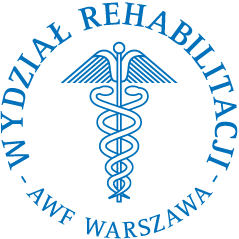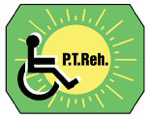


|
Current issue
Archive
Manuscripts accepted
About the journal
Editorial board
Reviewers
Abstracting and indexing
Contact
Instructions for authors
Publication charge
Ethical standards and procedures
Editorial System
Submit your Manuscript
|
3/2020
vol. 34 Original paper
Abdominal muscles activity and core stability in Pilates exercisers
Marta Wawryszewicz
1
,
Paweł Targosiński
1
Advances in Rehabilitation, 2020, 34(3), 22–28
Online publish date: 2020/09/16
Article file
- 2020-03-ar-04.pdf
[0.53 MB]
ENW EndNote
BIB JabRef, Mendeley
RIS Papers, Reference Manager, RefWorks, Zotero
AMA
APA
Chicago
Harvard
MLA
Vancouver
IntroductionThe Pilates method, which was developed by Joseph Pilates in the 20th century, belongs to the "body and mind" category of exercises. It consists of exercises performed on equipment and on a mat [1]. Pilates exercises improve physical and mental condition [2]. They are intended to increase strength and flexibility. The quality and precision of movement are important elements of the method [1]. The original name of the method "Contrology", emphasizes “control” of the body position and movement as the guiding principle of the method. Other principles of the method are: concentration, centering - activation of core muscles, flow and breath [3]. In recent years, Pilates has been gaining popularity in physiotherapy. It is used as a complementary and alternative therapy for various diseases [1] and is recommended for people suffering from chronic diseases so as to support healthy behavior and habits, and to promote physical activity [4]. “Core stability” is provided by the structures of the Lumbo Pelvic Hip Complex (LPHC). Kibler et al. [5] define it as the ability to control the position and movement of the torso in order to generate optimal force and to transfer and control it throughout the kinetic chain, up to its most distal parts. [6]. While Motealleh et al. [7] describe it as the ability of the LPHC to maintain the position of the spine and restore its equilibrium after perturbations. Both deep and superficial core muscles (rectus abdominis /RA/, external oblique and erector spinae) contribute to the stabilization of the trunk [6]. Specific instructions may influence the level of activation of particular muscle groups in various trunk stability exercises and positions [8]. Voluntary and automatic activation patterns of deep and superficial muscles are being investigated by researchers [9]. Any core stability disturbances may become a risk factor of lower and upper extremity injuries in athletes [10, 11]. Numerous studies have analyzed and confirmed the effectiveness of Pilates exercises in strengthening and improving the function of core muscles [12-19]. RA muscle activation during selected Pilates exercises is higher than during traditional abdominal exercises (crunches, sit ups) [12]. Reduction of the size of the trunk supporting base in Pilates increases the activity of RA and internal oblique muscles [13]. Dorado et al. [14] confirmed that the 36-week Pilates program contributes to strengthening of the abdominal muscles (RA, obliques and transverse abdominis /TRA/ muscles) and balances muscular asymmetries between both sides of the body. Pilates exercises improve TRA activation according to assessment by ultrasound [15]. Barbosa et al. [16] have proven that practicing Pilates increases the strength of contraction of the TRA, internal oblique and longissimus muscles during an "abdominal drawing-in maneuver" from 12-32% in non-exercisers to 52-62% in Pilates practitioners.Panhan et al. [17] measured the neuro-muscular efficiency of the multifidus muscle in women practicing Pilates and non-exercising women. Values obtained by the Pilates group were significantly higher than those obtained by the non-exercising group. Applying Pilates rules and techniques for movement, even without previous Pilates experience, results in greater muscle activation during movement. Applying the Pilates breathing technique while performing trunk flexion leads to higher TRA activation in comparison to standard breathing [18]. However, according to Critchley et al. [19], Pilates exercises increase the activity of the TRA only while performing exercises, not while in a standing or sitting position. Pilates exercises are also considered to be effective in the treatment of chronic low back pain (CLBP) as they involve the deep muscles of the torso, are designed to improve central stability and make the body more elastic at the same time [20, 21]. Pilates exercises can prevent [22] or reduce pain and disability, and improve function and the quality of life in people suffering from CLBP [21]. They improve neuromuscular control and the activation time of anterior and posterior trunk muscles [22]. Potential differences in the effects of Pilates exercises can be related to the use of mat or equipment and to the choice between stability and mobility Pilates exercises [20]. Due to the diverse methodologies and numerous limitations of the available studies, further research is required to conclude how Pilates exercises may influence core muscle activity and core stability, both while exercising and during activities of daily living. Therefore, the purpose of this study was to evaluate abdominal muscle activity in people practicing Pilates and to examine the influence of Pilates exercises on core muscle activity. Materials and methodsThis study used a purposive sample selection considering inclusion and exclusion criteria. The inclusion criterion to the study group was practicing Pilates for at least 6 months in fitness clubs and Pilates studios in Warsaw and Wyszkow (Poland). Data about the type of Pilates classes (individual or group), frequency and exercise experience was collected from the study group. The data was not treated as additional inclusion criteria, nor analyzed within this study. Initially, the study group consisted of 63 adults practicing Pilates and the control group consisted of 15 adults, who did not exercise regularly and did not practice sport. Fifteen people were excluded from the study because of meeting at least one of the exclusion criteria (spine surgery, spondylolisthesis, cancer of the spine, injuries, pregnancy, stomach ache on the day of the test). Finally, 50 participants were included in the study group (48 women, 2 men: age = 47.2±12.7 years; height = 165.4±62.2 cm; body mass = 65.6±10.1 kg; BMI = 24±3.7 kg/m2) and 13 participants in the control group (10 women, 3 men: age = 37.1±13.4 years; height = 172±10.7 cm; body mass = 73.6±19.9 kg; BMI = 25±4.7 kg/m2). The study was approved by the Ethics Committee of the University of Physical Education in Warsaw (SKE 01-13/2019).The equipment used in the study was Pressure Biofeedback Stabilizer (PBS). The device works similarly to a sphygmomanometer and measures the pressure change inside the 3-chamber pressure cell. It can be used for exercises improving the stabilization of the lumbar, pelvic and cervical spine or tests of activity of specific muscles or muscle groups (e.g. TRA). Both groups took part in two tests: the transverse abdominis (TRA) muscle activity test in the prone position and the lumbar spine stability test while moving the lower limbs in the supine position. The test procedures were created on the basis of the PBS user manual and studies of Kochański et al. [23] and Hides et al. [24]. The additional equipment needed for tests was an exercise mat placed on a firm surface and a flat 2-cm-high head cushion. TRA muscle activity test The participant was lying on the mat in prone with arms alongside torso and forehead supported by the head cushion. The PBS airbag was then placed under the stomach so that one of its longer edges touched both anterior superior iliac spines. The participant remained in a relaxed position breathing naturally while the examiner filled the PBS airbag until the 70 mmHg pressure was achieved. By saying “Without any movement of the spine or pelvis, please activate your lower abdomen and pull your navel to your spine. Keep this tension and breathe freely” the examiner asked the participant to stabilize the pelvis and the lumbar spine by activating the TRA muscle. The examiner recorded any pressure changes showed by the PBS manometer and observed any movements of the lumbar spine or pelvis for ten seconds. The procedure was repeated three times. The results were interpreted according to the criteria showed in the Tab. 1. Tab. 1. Interpretation of the TRA muscle activity test results Lumbar spine stability test The participant was lying supine with hips, knees and ankles flexed and feet flat on the mat. The PBS pressure cell was placed under the participant’s lumbar spine, with its edge positioned in line with posterior superior iliac spines and inflated to a baseline of 40 mmHg. The task was to flex the hip joint (90o) and stabilize the spine and pelvis while the limb remained in this position for ten seconds. The command used was as follows: “Without moving your spine or pelvis, please fold one knee up and keep it above your hip. Breathe naturally”. The procedure was repeated three times for each limb. During the test the examiner recorded any pressure changes showed by the PBS manometer and observed any movements of the lumbar spine or pelvis. The results were interpreted according to the criteria showed in the Tab. 2. Tab. 2. Interpretation of the lumbar spine stability test results Statistical analysis of the results was carried out using SPSS Statistics 24.0.0. The assumptions of normal distribution was tested using the Shapiro-Wilk test. The Mann-Whitney U test was used to analyze the differences between mean independent results (for quantitative and rank variables). The correlation analysis between rank and quantitative variables was performed using the Spearman’s rank correlation coefficient. The level of significance was set at p ≤ 0.05. ResultsTRA muscle activity testThe average result obtained in the study group was -4.16 mmHg, and in the control group -4.15 mmHg. The analysis using the Mann-Whitney U test (Z = -0.584; p = 0.559) showed no significant difference between the results of the TRA muscle activity test obtained in the study group and the control group. However, a higher standard deviation value and wider confidence interval range can be seen for the mean in the control group compared to the study group (Tab. 3). This indicates a greater discrepancy and greater dispersion of the results obtained in the control group as compared to the study group. Tab. 3. The mean values, standard deviation and the Mann-Whitney U test values: TRA muscle activity test [mmHg] - study group/control group A good result in the TRA activity test was obtained by 62% of people in the study group and 53.8% of people in the control group. A satisfactory result in the study and control group was recorded in 24% and 15.4%, respectively. Whilst 14% of people from the study group and 30.8% of people from the control group obtained a poor result ( Fig. 1). Fig. 1. The percentage of results obtained in the TRA muscle activity test - study group/control group None of the study participants, both in the study group and in the control group, obtained a disappointing result. No movements of the spine or pelvis that could be considered significant were observed during tests. Lumbar spine stability test The average result obtained by participants in the study group in the lumbar spine stability test was 9.34 mmHg while in the control group the average result in this test was 11.15 mmHg. The analysis carried out using the Mann-Whitney U test (Z = -1.464; p = 0.143) showed no significant difference between the lumbar spine stability test results obtained by both groups (Tab. 4). Tab. 4. The mean values, standard deviation and the Mann-Whitney U test values: lumbar spine stability test [mmHg] - study group/control group In the lumbar spine stability test, half of the people in the study group had a very good result and 16% of the people had a good result. A poor result was recorded in 28% of people in this group, and unsatisfactory in 6%. The very good and good results in the control group were observed in 30.8% of participants. The result classified as poor was obtained by 38% of participants from the control group. No disappointing results were recorded in this group (Fig. 2). Fig. 2. The percentage of results obtained in the lumbar spine stability test - study group/control group DiscussionThe analysis of the results obtained in the TRA muscle test and the lumbar spine stability test showed no significant differences between the study and the control groups. Therefore, it could be interpreted that Pilates exercises do not affect the activity of core muscles and do not improve core stability. However, the results of the TRA muscle activity test in the study group were less differentiated than in the control group. The 95% confidence interval for the mean in the control group was wider than in the study group. Of course, the different numbers of participants in each group should be considered as a limitation of the study which may also indirectly impact the range of the confidence intervals. Another element which should be taken into consideration is the percentage of specific categories of results obtained in both groups. In the TRA muscle activity test, the results in the study group were classified as good (62%) and satisfactory (24%). In the control group the percentage of good results was also high (53.8%), however, almost one-third of the results was poor (30.8%). This means there were over twice as many poor results as in the study group. In the lumbar spine stability test half of the participants achieved a very good result and 16% a good result. Slightly over a third of this group received either poor (28%) or unsatisfactory (6%) results. In the control group, the results are almost equally divided between very good (30.8%), good (30.8%) and poor (38.5%).It can be said that both groups did better in the TRA muscle activity test than in the lumbar spine stability test. The results of studies on the impact of Pilates exercises on abdominal and core muscles are not conclusive. Dorado et al. [17] proved that it is possible to strengthen the RA and TRA muscles by practicing Pilates exercises. In another study, the thickness of abdominal muscles (TRA, internal and external oblique, RA) as well as the cross-sectional area of the multifidus muscle, were assessed using ultrasound in people practicing Pilates. The initial results were compared to the results obtained after a year of exercising. A direct moderate strength correlation was found between the results for TRA muscle. The thickness the of internal oblique muscle and the cross-sectional area of the multifidus muscle increased significantly. However, this was observed only in people who also practiced another type of physical activity in parallel to Pilates [25]. According to Mok et al. [26], assessment of core muscle activity during exercises may indicate an improvement of central stability in general. Numerous studies have shown activation of core muscles during Pilates exercises. However, it has not been clearly proven that it leads to better core activation in other activities. Although Critchley et al. [14] confirmed an increase in TRA muscle activity during Pilates exercises, they did not observe an increase in the activity of this muscle while standing and sitting. On the other hand, one should not expect training to increase core muscle activity in such a basic activity as maintaining a sitting or standing position. Perhaps it would be more advisable to assess muscle in a more challenging situation , e.g. when changing body position or making dynamic limb movements. De Oliveira Menacho et al. [27] analyzed the level of activation of the multifidus muscle in a person performing two Pilates exercises (swan dive and breast stroke), using a large ball or the Reformer. They found that the muscles activation was higher during exercises on the Reformer and in the concentric phase, compared to the eccentric phase. Moreover, they suggested that the level of activation obtained is not sufficient to strengthen the muscles in healthy active people. The limitations of the current study were the small sample size, purposive sample selection considering inclusion/exclusion criteria and nonequivalent posttest-only design. The sample size was determined by availability of adults practicing Pilates. The study design was selected due to exploratory capacity, which may allow the generation of hypotheses for future testing. Thus, any statistical generalizations must be made with caution, due to the bias of selection and the limited statistical power of the study. Despite the limitations of the methodology, based on experience and the logic of the study, we believe that the results obtained in our study can be useful for clinicians working with patients who are similar to the participants in our study. ConclusionsPilates exercises do not influence the activity of the TRA muscle, or the core stability assessed using the PBS. There is no significant difference between the results obtained by the group practicing Pilates and the results obtained by the control group. However, the high percentage of positive results and the relatively low percentage of poor results obtained in the TRA muscle activity test in the study group encourages further research in this area.1. Kamioka H, Tsutani K, Katsumata Y et al. Effectiveness of Pilates exercise: a quality evaluation and summary of systematic reviews based on randomized controlled trials. Complement Ther Med. 2016;25:1-19 2.
Fleming KM, Herring MP. The effects of Pilates on mental health outcomes: a meta-analysis of controlled trials. Complement Ther Med. 2018;37:80-95 3.
Wells C, Kolt G, Bialocerkowski A. Defining Pilates exercises: a systematic review. Complement Ther Med. 2012;20:253-262 4.
Miranda S, Marques A: Pilates in noncommunicable diseases: a systematic review of its effects. Complement Ther Med. 2018;39:114-130 5.
Kibler WB, Press J, Sciascia A. The role of core stability in athletic function. Sports Med. 2006;36(3):189-198 6.
Chang M, Slater LV, Corbett RO et al. Muscle activation patterns of the lumbo-pelvic-hip complex during walking gait before and after exercise. Gait Posture. 2017;52:15-21 7.
Motealleh A, Yoosefinejad AK, Ghoddosi NA, Pirouzi S. Trunk postural control during unstable sitting differs between patients with patellofemoral pain syndrome and healthy people: a cross-sectional study. The Knee. 2019;26:26-32 8.
Bjerkefors A., Ekblom MM, Joseffsson K et al. Deep and superficial abdominal muscle activation during trunk stabilization exercises with and without instruction to hollow. Man. Ther. 2010;15:502-507 9.
Taillon-Hobson A, Aaron S, McLean L et al. Voluntary and automatic recruitment of superficial and deep abdominal muscles in adults with and without cystic fibrosis. J. Electromyogr Kines. 2011;21:411-417 10.
Pogetti LS, Nakagawa TH, Contecote GP. Core stability, shoulder peak torque and function in throwing athletes with and without shoulder pain. Phys Ther Sport. 2018;34:36-42 11.
De Blaiser C, Roosen P, Willems T et al. Is core stability a risk factor for lower extremity injuries in an athleticpopulation? A systematic review. Phys Ther Sport. 2018;30:48-56 12.
Bueno Silva G., Morgan M.M., de Carvalho W.R.G. et al. Electromyographic activity of rectus abdominis muscles during dynamic Pilates abdominal exercises. J Bodyw Mov Ther. 2015; 19(4):629-635 13.
Panhan AC, Goncalves M, Eltz GD et al. Electromyographic evaluation of trunk core muscles during Pilates exercise on different supporting bases. J Bodyw Mov Ther. 2019;24(4):855-859 14.
Dorado C, Calbet JAL, Lopez-Gordillo A et al. Marked Effects of Pilates on the Abdominal Muscles: A Longitudinal Magnetic Resonance Imaging Study. Med Sci Sports Exerc. 2012 Aug;44(8):1589-94 15.
Cruz-Diaz D, Bergamin M, Golbo S et al. Comparative effects of 12 weeks of equipment based and mat Pilates in patients with Chronic Low Back Pain on pain, function and transversus abdominis activation. A randomized controlled trial. Complement Ther Med. 2017;33:72-77 16.
Barbosa AC, Vieria ER, Silva AF et al. Pilates experience vs. muscle activation during abdominal drawing-in maneuver. J Bodyw Mov Ther. 2018;22:467-470 17.
Panhan AC, Goncalves M, Eltz GD et al. Meuromuscular efficiency of the multifidus muscle in pilates practitioners and non-practitioners. Complement Ther Med. 2018;40:61-63 18.
Carvalho Barbosa AW, Antunes Guedes C, Novaes Bonifacio D et al. The Pilates breathing technique increases the electromyographic amplitude level of the deep abdominal muscles in untrained people. J Bodyw Mov Ther. 2015;19(1):57-61 19.
Critchley DJ, Pierson Z, Battersby G. Effect of pilates mat exercises and conventional exercise programmes on transversus abdominis and obliquus internus abdominis activity: Pilot randomised trial. Man. Ther. 2011;16:183-189 20.
Ferreira Miranda I, Souza C, Tavares Schneider A et al. Comparison of low back mobility and stability exercises from Pilates in non-cpecific low back pain: A study protocol of a randomized controlled trial. Complement Ther Clin Practic. 2018 May;31:360-368 21.
Natour J, de Araujo Cazotti L, Ribeiro LH et al. Pilates improves pain, function and quality of life in patients with chronic low back pain: a randomized controlled trial. Clin. Rehabil. 2015;29(1):59-68 22.
Cardoso Alves M, de Souza Neto RJ, Barbosa RI, et al. Effects of a Pilates protocol in individuals with non-specific low back pain compared with healthy individuals: Clinical and elecrtomyographic analysis. Clin Biomech. 2020;72:172-178 23.
Kochański B, Plaskiewicz A, Kałużny K et al. Zastosowanie urządzenia Pressure Bio-Feedback Stabilizer w ocenie aktywności mięśnia poprzecznego brzucha u pacjentów z dolegliwościami bólowymi kręgosłupa w odcinku lędźwiowym. J. Health Sci. 2014;4:14 24.
Hides J, Stanton W, Dilani Mendis M et al. The relationship of transversus abdominis and lumbar multifidus clinical muscle tests in patients with chronic low back pain. Man. Ther. 2011;16:573-577 25.
Gala-Alarcon P, Calvo-Lobo C, Serrano-Imedio A et al. Ultrasound evaluation of the abdominal wall and lumbar multifidus muscles in participants who practice Pilates: a 1-year follow-up case series. J Manipulative Physiol Ther. 2018;41(5):434-444 26.
Mok NW, Yeung EW, Cho JC et al. Core muscle activity during suspension exercises. J Sci Med Sport. 2015;18:189-194 27.
De Oliveira Menacho M, Silva MF, Obara K et al. The electromyographic activity of the multifidus muscles during the execution of two Pilates exercises – swan dive and breast stroke – for healthy people. J Manipulative Physiol Ther. 2013;36:319-326
This is an Open Access journal, all articles are distributed under the terms of the Creative Commons Attribution-NonCommercial-ShareAlike 4.0 International (CC BY-NC-SA 4.0). License (http://creativecommons.org/licenses/by-nc-sa/4.0/), allowing third parties to copy and redistribute the material in any medium or format and to remix, transform, and build upon the material, provided the original work is properly cited and states its license.
|
    |